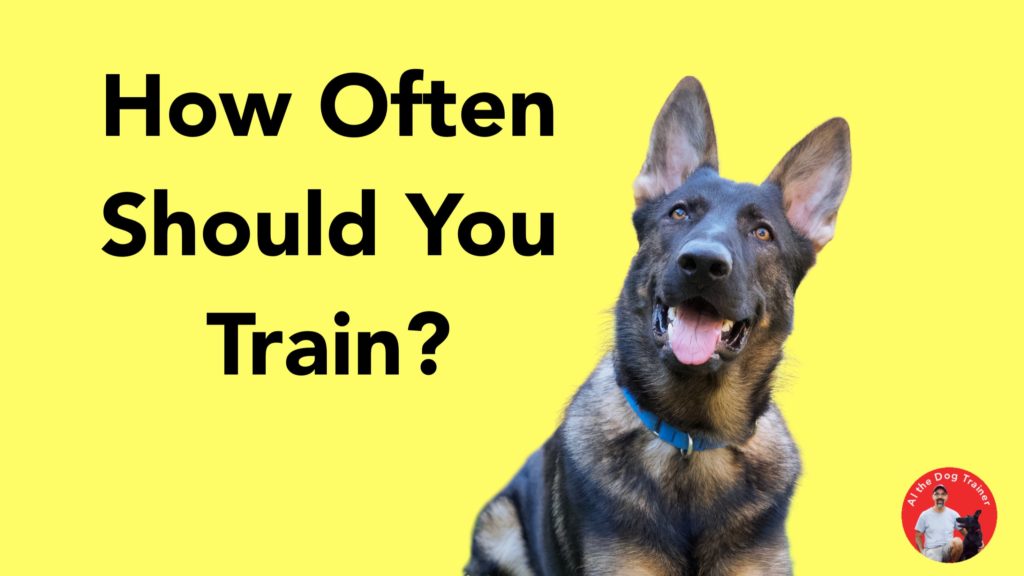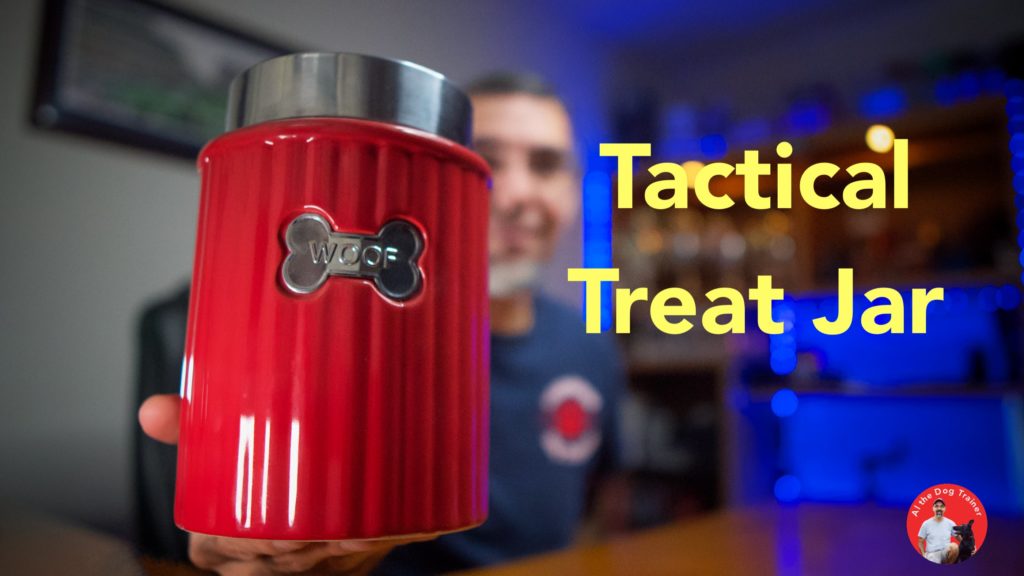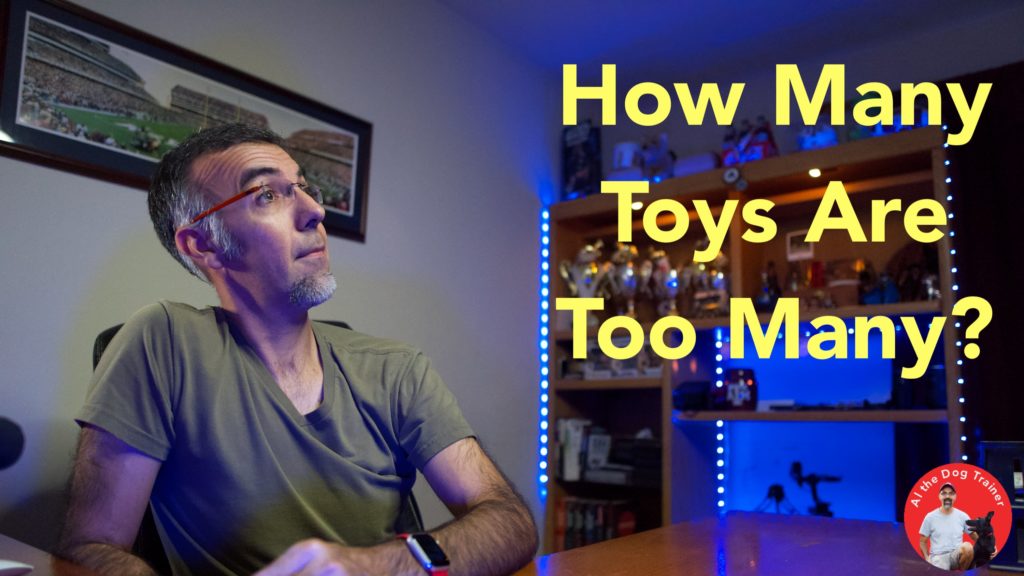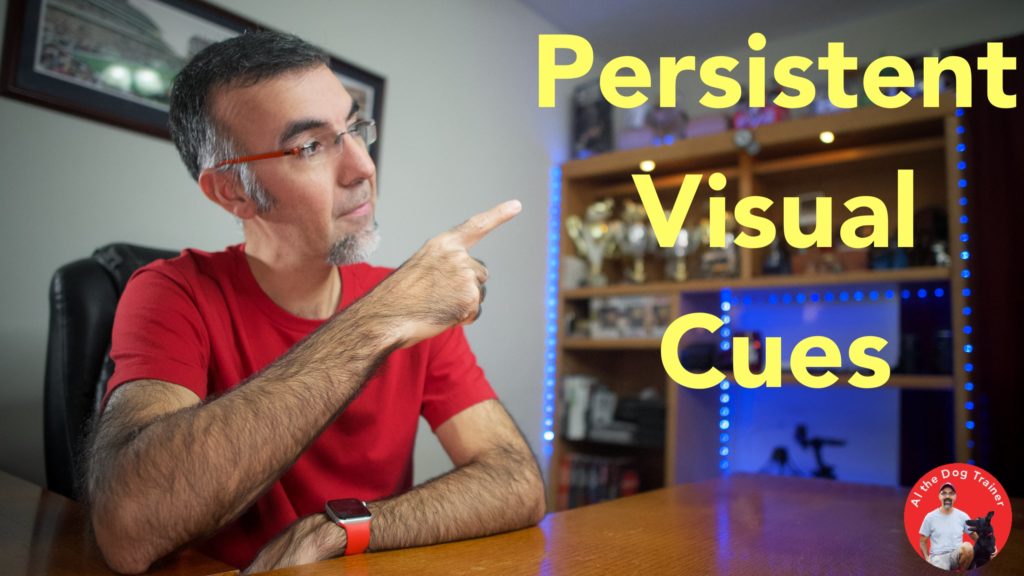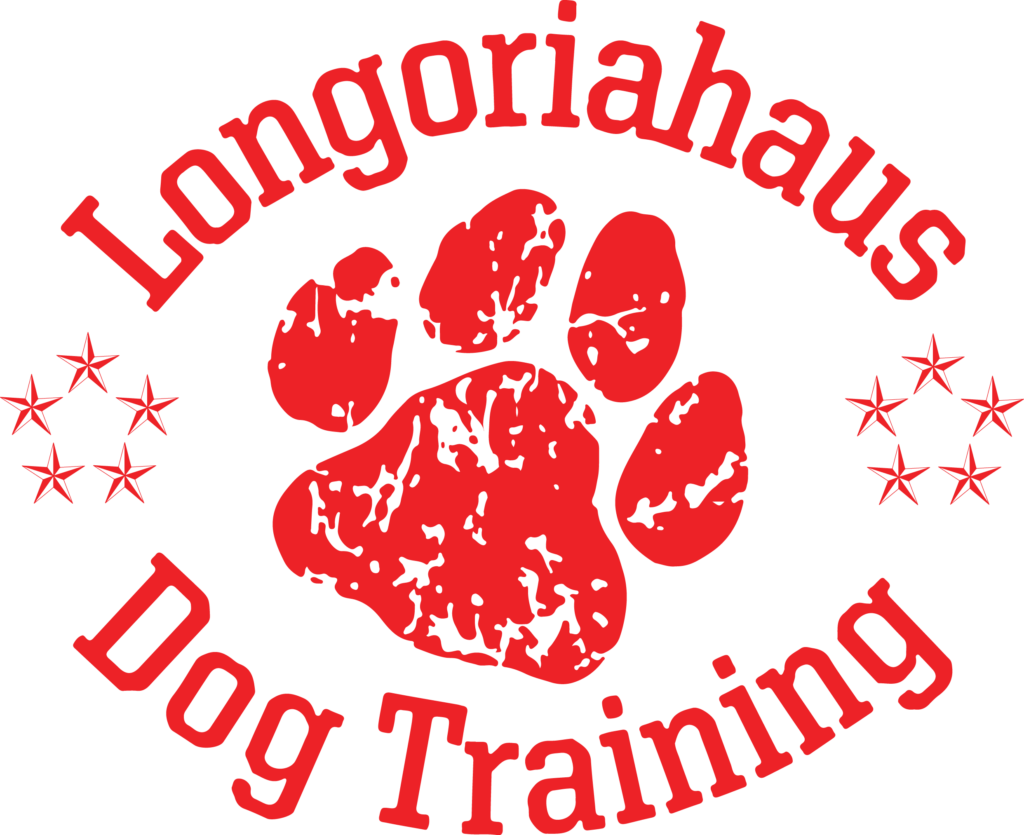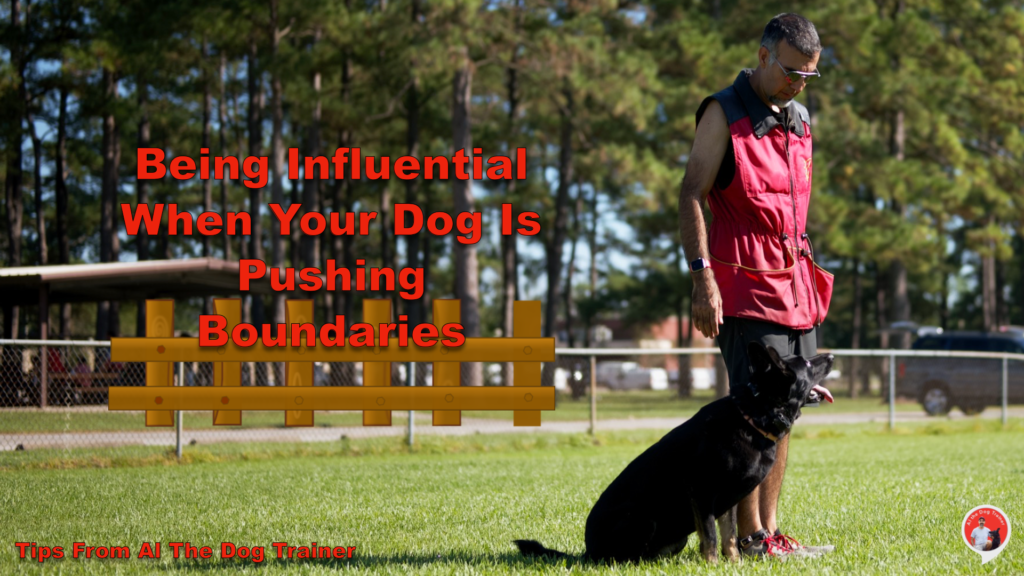
Today’s topic is: Being influential when your dog is pushing boundaries. Dogs are going to push boundaries. And sometimes, wouldn’t it be nice if they didn’t push the boundaries so much? It’s not like you don’t have a million things to do. And it would be nice if your dog could calm down for a little bit and let you finish that last thing that you’re trying to get done.
Kind of My Life
What I’m describing is kind of my life because, well, these two German Shepherd puppies of mine, they’re going to push boundaries. They need good management. They need a lot of training and a lot of supervision. And that’s really what I want to talk about today is the supervision of the dog.
When I’m talking about supervision, I’m talking about when we’re not necessarily in training mode. Not when we’re working on the skills for the sport that we’re going to compete in but when we’re working on their manners. Whenever they’re getting some degree of freedom inside of my house. You should know that for my dogs to have freedom in my home, they have to be well mannered. They can’t be sprinting around and jumping on everything or tearing up my nice things. They have to be in control themselves.
So how do I go about creating calm dogs? Especially when they can be 70, 80, 90-pound dogs? Yes, I want them to have fun, but I want them to understand that fun time comes outside and with me and generally not inside. That’s the tip that I want to share with you guys about being influential when your dog is pushing the boundaries.
Your Proximity to Your Dog
So the easiest way that I can frame this is that your proximity to your dog has a lot to do with what they’re going to do and what they’re going to try to get away with. I see this quite often, and I see this with a lot of my new clients, and some of them get it well. And sometimes, they’re kind of missing the point. So for any of you who are training with me, please pay attention to what I will say next.
When you start teaching your dog how to do different things, let’s say you’re trying to get them to learn how to heel and stay still as you have a conversation with another human being. Or if you’re trying to get them to stay as you’re watching TV or cooking dinner or eating dinner. Any one of those things. The closer your dog is to you while you’re doing those things, the better off you’re going to be.
So let’s talk about heel position for a moment because I see this one mistake quite a bit. When you have your dog close to you, that’s not from your perspective necessarily, but from theirs. You see, if your dog’s eyes cannot perceive you, then you’re essentially invisible. So if you’re trying to fix a problem with your dog becoming calmer when they’re meeting people, then you’re going to have to be in their zone of perception. And that’s part of being influential.
A Dog’s Perspective
Suppose you think about it from a dog’s perspective. Most of us are between 5-6 feet tall, and your dog might be anywhere from as small as 6 inches off the ground to maybe 2 1/2 feet, something like that for a giant dog. So we tower over them. And by us being in the visual field, it makes it a lot easier for us to be influential and calm them.
But let’s say that you’re inside your house and you’re sitting down with your dog close to you, and they can feel your presence right next to them. That’s being able to see you in their peripheral vision, not just hear you by rotating their ears. Them seeing you in proximity to them has a significant effect, which can help you set those boundaries. If you’re right there now, one thing that it is going to do for sure is allow you to be more reinforcing because your dog is calm because they’re there in your presence.
80-95% Rate
They understand that there’s a consequence for breaking position early, but it puts you in the position to be able to reward your dog at that 80-95% rate. Think about this, and I’ll leave you all with this last thought. Don’t you want your dog to be an A and B student? And aren’t you the teacher and role model? So the answer is yes. You probably do want your dog to get an A in the course. And yes, you are the role model for their detriment or further benefit.
The 80-95% rate doesn’t necessarily need to take one, two, and three minutes. It doesn’t have to be fast. You can spread it out over time. And if you do that, that’s one of the best ways to grow a skill. So that way, your dog can understand that there’s value in staying and doing something for a long time. And that’s a great way to help your dog in these situations.
I hope that one was helpful for that dog in your life that might be pushing boundaries. Go check out my YouTube Channel for lots of helpful information, as well as check out more of my blog articles right here at www.longoriahausdogtraining.com.
Happy Training!

